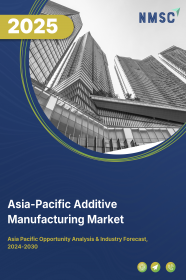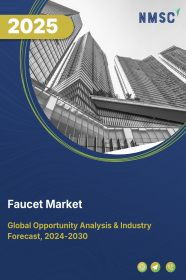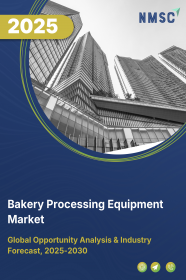
Asia-Pacific Additive Manufacturing Market by Type (Desktop 3D Printer and Industrial 3D Printer), by Technology (Stereolithography, Fused Deposition Modeling, Selective Laser Sintering, Direct Metal Laser Sintering, Polyjet Printing, Inkjet Printing, Electron Beam Melting, Laser Metal Deposition, Digital Light Processing, Laminated Object Manufacturing, and Other Technology), by Component (Hardware, Software, and Services), and Others – Opportunity Analysis and Industry Forecast, 2024–2030
Industry: Construction & Manufacturing | Publish Date: 14-Feb-2025 | No of Pages: 213 | No. of Tables: 153 | No. of Figures: 118 | Format: PDF | Report Code : CM669
Asia-Pacific Additive Manufacturing Market Overview
The Asia-Pacific Additive Manufacturing Market size was valued at USD 6.27 billion in 2023, and is predicted to reach USD 29.41 billion by 2030, at a CAGR of 23.2% from 2024 to 2030. In terms of volume, the market size was 289 thousand units in 2023, and is projected to reach 1580 thousand units by 2030, with a CAGR of 25.3% from 2024 to 2030.
The additive manufacturing (AM) market, also referred to as additive layer manufacturing (ALM) or three-dimensional (3D) printing, represents a global industry focused on developing, producing, and distributing technologies and materials used to fabricate three-dimensional objects layer by layer from digital models. This market caters to diverse sectors such as aerospace, automotive, healthcare, and consumer goods, offering innovative solutions for prototyping, production, and customized manufacturing.
AM is renowned for its capacity to create highly intricate and customized components with minimal material waste, leading to significant cost savings and environmental benefits. A distinguishing feature of this market is its array of printing technologies, including stereolithography (SLA), selective laser sintering (SLS), and fused deposition modeling (FDM), each tailored to meet specific industry needs and applications. Moreover, AM's rapid prototyping capability accelerates product development cycles, empowering businesses to innovate and bring products to market faster than traditional manufacturing methods.
Rising Growth of the Automotive Industry Propels the Demand for Additive Manufacturing
The rapid expansion of the automotive industry across the Asia-Pacific region is driving increased adoption of additive manufacturing (AM) technologies. As countries such as China and Japan experience surges in car production, there is a heightened need for AM's capabilities in rapid prototyping, tooling, and production of complex, customized automotive parts.
AM enables manufacturers to achieve greater design flexibility, reduce production times, and enhance cost-efficiency. This trend is supported by robust growth figures, such as China's domestic-brand passenger vehicle sales increasing by 5.3% year-on-year in early 2023, illustrating the sector's reliance on AM for innovation and efficiency.
Rapid Advancement in Aerospace Industry Boosts the Market Growth
The advancement of space exploration and satellite technology in the Asia-Pacific region is a significant driver of additive manufacturing (AM) adoption. Countries such as China are leveraging AM to produce lightweight, complex components crucial for space missions.
AM's ability to create intricate parts with precision and efficiency aligns with the stringent requirements of aerospace applications, including satellite launches and deep space exploration.
This is exemplified by China's integration of 3D printed parts in the successful launch of the SmartSat-2A satellite in February 2024, highlighting AM's pivotal role in advancing space technology across the region.
High Upfront Cost Restrains Market Growth
The high upfront cost of equipment, materials, and training serves as a significant restraining factor to Asia-Pacific additive manufacturing market growth. This substantial investment poses a major hurdle for businesses, particularly smaller ones, limiting their ability to enter the market or expand their capabilities. Additionally, the cost of materials and training further adds to the overall expense. Consequently, many businesses are deterred from adopting technology due to these high upfront costs, thereby impeding the additive manufacturing market growth.
Integration of Artificial Intelligence (AI) in Asia-Pacific Additive Manufacturing Presents Lucrative Opportunity for Market Expansion
The integration of Artificial Intelligence (AI) holds immense potential to drive Asia-Pacific additive manufacturing market expansion by optimizing production processes, enhancing product design capabilities, and enabling the creation of highly customized and complex objects.
By incorporating AI, companies can analyze vast amounts of data collected during the printing process—such as material properties, printing parameters, and environmental conditions—to identify patterns, optimize settings, and predict potential defects. This leads to improved print quality and reduced waste.
China Dominates the Asia-Pacific Additive Manufacturing Market Share
The growth of the automotive industry in China significantly propels the demand for additive manufacturing (AM) due to the sector's need for rapid prototyping, tooling, and production of complex, customized car parts. As China's automotive market expands, manufacturers seek innovative solutions to enhance design flexibility, reduce production times, and lower costs. AM offers the ability to quickly produce prototypes for new vehicle models, enabling faster iterations and more efficient design processes.
According to a report by China’s State Council Information Office, in the first quarter of 2023, sales of domestic-brand passenger vehicles increased by 5.3% year-on-year, reaching over 2.68 million units and accounting for 52.2% of total passenger car sales in China. This surge in the automotive industry enhances the adoption of AM to enable innovation, customization, and prototyping in car manufacturing in the country.
Furthermore, the advancement of space exploration and satellite technology in China is driving a surge in demand for AM as the industry seeks innovative solutions for lightweight, complex components crucial for space missions.
AM enables the production of intricate parts with high precision and reduced weight, meeting the stringent requirements of aerospace applications. China's ambitious space programs, including satellite launches and lunar exploration missions, are increasingly relying on AM to accelerate prototyping, enhance performance, and streamline production processes.
On February 3, 2024, China set a new standard by incorporating 3D-printed parts in the successful launch of the SmartSat-2A satellite, also known as Zhixing-2A. The 3D printing company BLT used its metal 3D printing expertise to create critical parts for the satellite, including the satellite body structure and three important components for the satellite's radar. As the space sector continues to expand, fueled by technological breakthroughs and exploration objectives, the demand for AM technologies in China is poised to rise, positioning the country as a key player in the global space industry.
India to Witness Substantial Growth in the Additive Manufacturing Market
The modernization and expansion of the healthcare sector in India is increasing the need for customized, high-precision medical devices such as implants, prosthetics, and surgical instruments. Additive manufacturing (AM), with its ability to produce complex, patient-specific designs quickly and cost-effectively, is well-suited to meet these demands.
According to the India Brand Equity Foundation report 2024, India is the fourth-largest Asian medical devices market, following Japan, China, and South Korea, with a market size of USD 11 billion in 2022. This market is expected to grow to USD 50 billion by 2030, at a CAGR of 16.4%. This surge in India's medical devices market is increasing the demand for AM due to its capability to quickly and cost-effectively produce customized, high-precision medical devices and components.
Additionally, the growing number of product launches of 3D printers by key players is significantly boosting the demand for additive manufacturing in the country. The introduction of new, high-quality, and affordable 3D printers makes AM technology more accessible to various sectors, including education, healthcare, and engineering.
This accessibility drives wider adoption and integration of 3D printing into production processes, encouraging innovation and efficiency. In October 2022, WOL3D launched a range of high-quality, affordable 3D printers in India, including models Pixel S1, Twilight 10, and Aster Max. These printers are designed for easy assembly and use, featuring auto-leveling and intelligent sensor technology. As businesses and industries recognize the benefits of rapid prototyping and customized production, the demand for AM technologies in India continues to rise.
Competitive Landscape
The prominent key players operating in the Asia-Pacific additive manufacturing industry include HP Inc., Colibrium Additive (GE Aerospace), EOS GmbH, Stratsys, Trumpf, 3D Systems Inc., Formlabs, Desktop Metal Inc., DMG Mori AG, Proto Labs Inc., and others.
Asia-Pacific Additive Manufacturing Market Key Segments
By Type
-
Desktop 3D Printer
-
Industrial 3D Printer
By Technology
-
Stereolithography
-
Fused Deposition Modeling
-
Selective Laser Sintering
-
Direct Metal Laser Sintering
-
Polyjet Printing
-
Inkjet Printing
-
Electron Beam Melting
-
Laser Metal Deposition
-
Digital Light Processing
-
Laminated Object Manufacturing
-
Other Technology
By Component
-
Hardware
-
Software
-
Design Software
-
Inspection Software
-
Printer Software
-
Scanning Software
-
-
Services
By Application
-
Prototyping
-
Tooling
-
Functional Parts
By End User
-
Desktop Additive Manufacturing
-
Educational Purpose
-
Fashion & Jewellery
-
Objects
-
Dental
-
Food
-
Other Desktop Additive Manufacturing
-
-
Industrial Additive Manufacturing
-
Automotive
-
Aerospace & Defense
-
Healthcare
-
Consumer Electronics
-
Power & Energy
-
Other Industrial Additive Manufacturing
-
By Country
-
China
-
Japan
-
India
-
South Korea
-
Australia
-
Indonesia
-
Singapore
-
Taiwan
-
Thailand
-
Rest of Asia Pacific
Key Players
-
HP Inc.
-
Colibrium Additive (GE Aerospace)
-
EOS GmbH
-
Stratsys
-
Trumpf
-
3D Systems Inc.
-
Formlabs
-
Desktop Metal Inc.
-
DMG Mori AG
-
Proto Labs Inc.
REPORT SCOPE AND SEGMENTATION:
|
Parameters |
Details |
|
Market Size Value in 2023 |
USD 6.27 billion |
|
Revenue Forecast in 2030 |
USD 29.41 billion |
|
Growth Rate |
CAGR of 23.2% from 2024 to 2030 |
|
Market Volume in 2023 |
289 thousand units |
|
Market Forecast in 2030 |
1580 thousand units |
|
Volume Growth Rate |
CAGR of 25.3% from 2024 to 2030 |
|
Analysis Period |
2023–2030 |
|
Base Year Considered |
2023 |
|
Forecast Period |
2024–2030 |
|
Market Size Estimation |
Billion (USD) |
|
Growth Factors |
|
|
Companies Profiled |
10 |
|
Countries Covered |
10 |
|
Customization Scope |
Free customization (equivalent up to 80 working hours of analysts) after purchase. Addition or alteration to country, regional, and segment scope. |
|
Pricing and Purchase Options |
Avail customized purchase options to meet your exact research needs. |

















 Speak to Our Analyst
Speak to Our Analyst





















